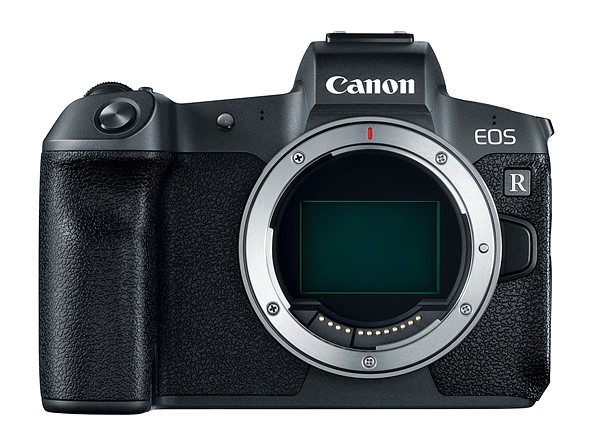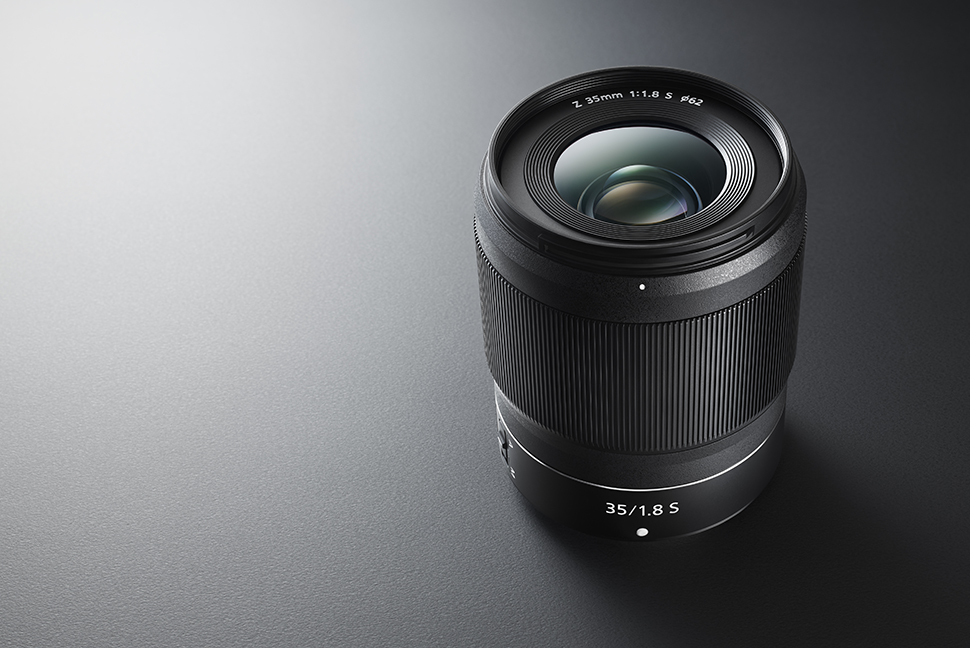Canon and Nikon were always somewhat reluctant to join the full-frame mirrorless party, and their respective EOS M and 1 systems never quite made the same dent in the market as their rivals.
It’s all change this year, however, as both companies have caved into the massive demand for full-frame alternatives to their DSLR lines, with Canon releasing the EOS R and Nikon kicking off its Z system with the Z6 and Z7.
Both systems are likely to have many early adopters, but how exactly do the flagship models compare on the spec sheet? Here, we pit the Canon EOS R against the Nikon Z7 to find out where each has the edge over its rival.
Nikon Z7 vs Canon EOS R: resolution
The 31.7MP sensor inside the EOS R, which produces images with an effective 30.3MP, is no doubt perfectly adequate for many user’s needs, but on paper it’s somewhat behind the Z7’s 45MP sensor (pictured below). It is, however, a little higher in pixel count than the 24.5MP Nikon Z6, and so it ends up sitting somewhere between the two.
Another difference between the two is that Canon has opted to fit the sensor inside the EOS R with a optical low-pass filter, whereas Nikon has gone without for the Z7. This latter design has become more popular in recent years, given the extra crispness it can give images, so on top of the added sensor resolution, the Z7 is more appealing from the off in this respect.

Nikon Z7 vs Canon EOS R: lens mount and flange depth
Nikon has been keen to stress the 55mm diameter of its new lens mount, and more specifically what such a large mount allows with regards to wide-aperture lens design and image quality. Size-wise, Canon has almost managed to match this, with its RF mount measuring 54mm.
A more significant difference is that the flange depth of the EOS RF mount is 20mm, whereas on the Z7 it’s just 16mm. This allows for the body to be a little more compact, and gives the Nikon another advantage over its rival.

Nikon Z7 vs Canon EOS R: stabilization
One of the key advantages of the Nikon Z7 over the EOS R is the presence of sensor-based stabilization, particularly as it allows you to benefit from the technology even when using older lenses. This promises up to five stops of compensation, and provides five-axis compensation when used with F-mount lenses via the FTZ adapter (and three-axis stabilization for non-VR lenses).
Image stabilization has been built into two of the four lenses released alongside the EOS R, namely the Canon RF 35mm f/1.8 IS STM Macro and Canon RF 24-105mm f/4L IS USM, but it’s clearly more convenient to have stabilization available via the body at all times – so another win for Nikon.
Nikon Z7 vs Canon EOS R: autofocus
While not quite class-leading in number, the 493 phase-detect AF points on the Z7’s sensor sure sounded impressive when that camera was announced. The EOS R, however, trounces this on paper with a maximum 5,655 points.
Not only that, but the working range’s lower measurement of -6EV is significantly lower than the Z7’s -3EV, and this should theoretically enable it to detect subjects better in low lighting conditions. We’ve yet to test this, but Canon’s system certainly appears to have a significant advantage here on paper.

Nikon Z7 vs Canon EOS R: ISO range
The Z7’s standard ISO range runs from ISO64 to 25,600, while Canon’s starts from a slightly higher ISO100 and tops out at ISO40,000. Extension settings on either side of these ranges see the Z7 shooting at settings as low as ISO32 equivalent and as high as ISO102,400 equivalent, while the EOS R has ISO50 and 102,400 extremes. So, while the two cameras are slightly different in what they offer here, in use it's unlikely to have a significant impact.
Nikon Z7 vs Canon EOS R: LCD screen
Both models have 2.1 million-dot LCD screens on their rears, although the Z7's is marginally larger, at 3.2 inches vs 3.15 inches. Nikon has opted to have the screen tilt up and down, whereas Canon has gone for the same vari-angle design that graces models like the EOS 6D Mark II. This enables the screen to face the front, which makes it more usable for selfie aficionados, and those intending to use the camera for vlogging, than the Nikon Z7.

Nikon Z7 vs Canon EOS R: EVF
Both models have been furnished with electronic viewfinders, and both have OLED panels with a resolution of 3.69 million dots.
The 0.80x magnification of the Nikon Z7’s viewfinder (pictured below) is slightly higher than the 0.76x magnification of the EOS R.

Nikon Z7 vs Canon EOS R: burst rate
For continuous shooting you’ll find that the Nikon Z7 has a 1fps advantage over the EOS R, with 9fps (with exposure locked to that of the first frame) versus the EOS R’s 8fps.
Switch to continuous focus and the Z7 can maintain its 9fps burst speed, while the EOS R drops to 5fps. If you want both autofocus and auto-exposure enabled, the Z7 can do so at 5.5fps.
Nikon Z7 vs Canon EOS R: memory card
Nikon’s decision to equip its Z7 body with just a single XQD memory card slot (pictured below) has been the source of much controversy, but Canon’s decision to go with just a single SDHC/SDXC slot may prove even more contentious.
While many current Canon users likely have a collection of SD cards, Nikon’s choice of XQD cards may prove to be the better option in the long run, particularly as Nikon has promised support for the CFexpress format, which is set to succeed XQD.

Nikon Z7 vs Canon EOS R: lenses
Nikon has officially unveiled three lenses alongside the new Z7, namely the NIKKOR Z 24-70mm f/4 S, NIKKOR Z 35mm f/1.8 S (below) and NIKKOR Z 50mm f/1.8 S, but it has promised many more to follow.
Canon has arguably got off to a stronger start, not only by releasing four lenses but also by having more wide-aperture options among these. They are the RF 28-70mm f/2L USM, RF 50mm f/1.2L USM, RF 35mm f/1.8 IS STM Macro and RF 24-105mm f/4L IS USM.
Both systems can be used with existing optics designed for Nikon and Canon DSLRs via adapters too.

Nikon Z7 vs Canon EOS R: battery life
Here, the EOS R has a small advantage, at least according to CIPA standards.
While the Z7 offers 330 frames per full charge, the EOS R manages 350 frames when using the EVF and 370 when using the LCD. If you enable the Power Saving mode, however, you can boost this to 430 and 450 frame respectively, and with the Eco Mode this can be increased even further to a maximum 560.
Nikon Z7 vs Canon EOS R: size and weight
There’s not a great deal to split the two cameras when it comes to weight, with the EOS R weighing 660g with its battery and memory card in place and the Z7 tipping the scales 675g.
Similarly, the 135mm width and 98.3mm height of the Canon EOS R are practically the same as the 134mm and 100.5mm of the Nikon Z7, but the EOS R is bigger overall thanks to it being 84.4mm deep against the Z7’s 67.5mm.

In short, with a higher-resolution sensor, a smaller body and the advantage of sensor-based image stabilization, Nikon’s Z7 seems to have a more solid core than the EOS R. That said, the specs of the EOS R’s autofocus, combined with the handful of lenses announced so far, show that there’s no clear winner, and potentially not enough to tempt anyone tied to one system to jump to the other.